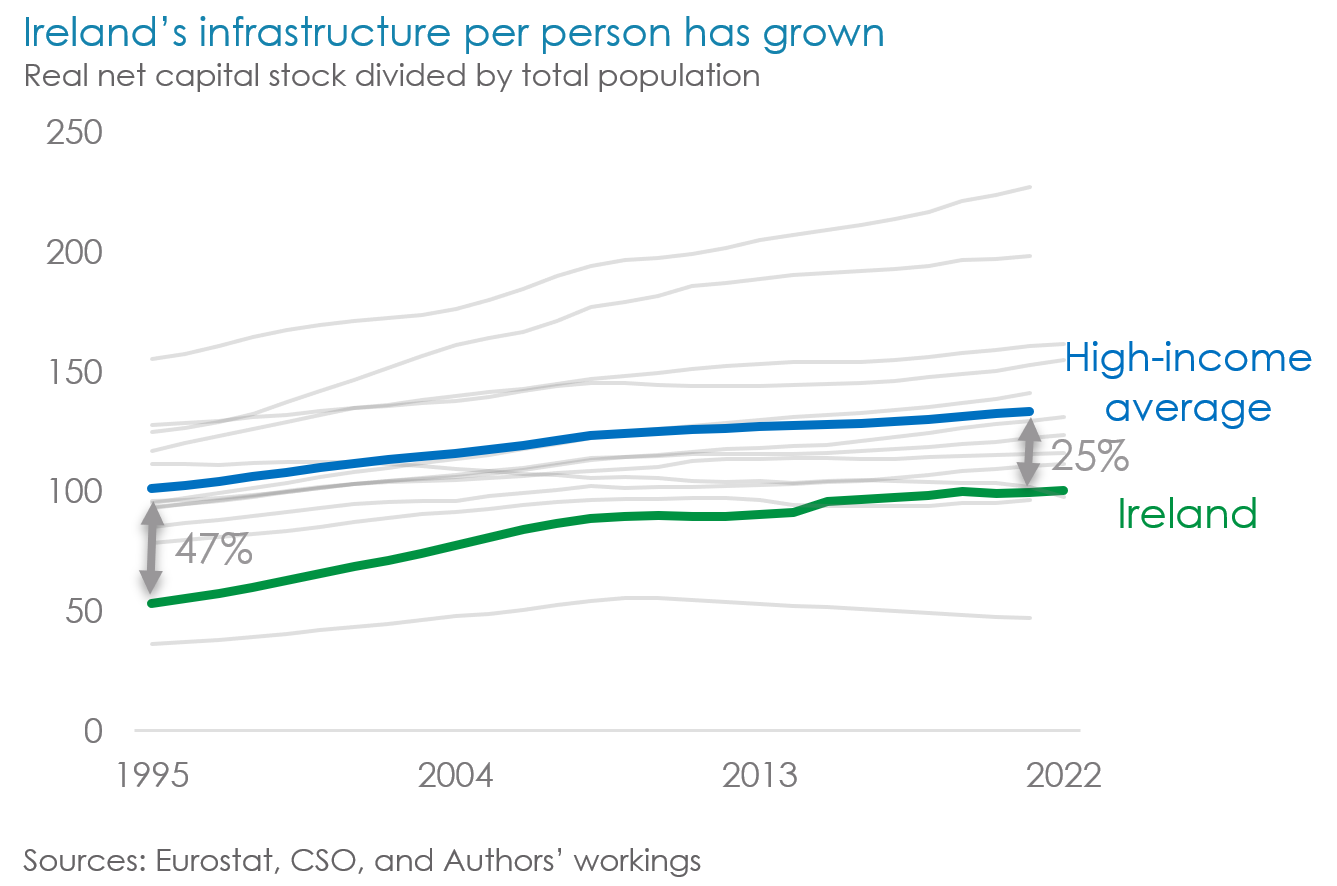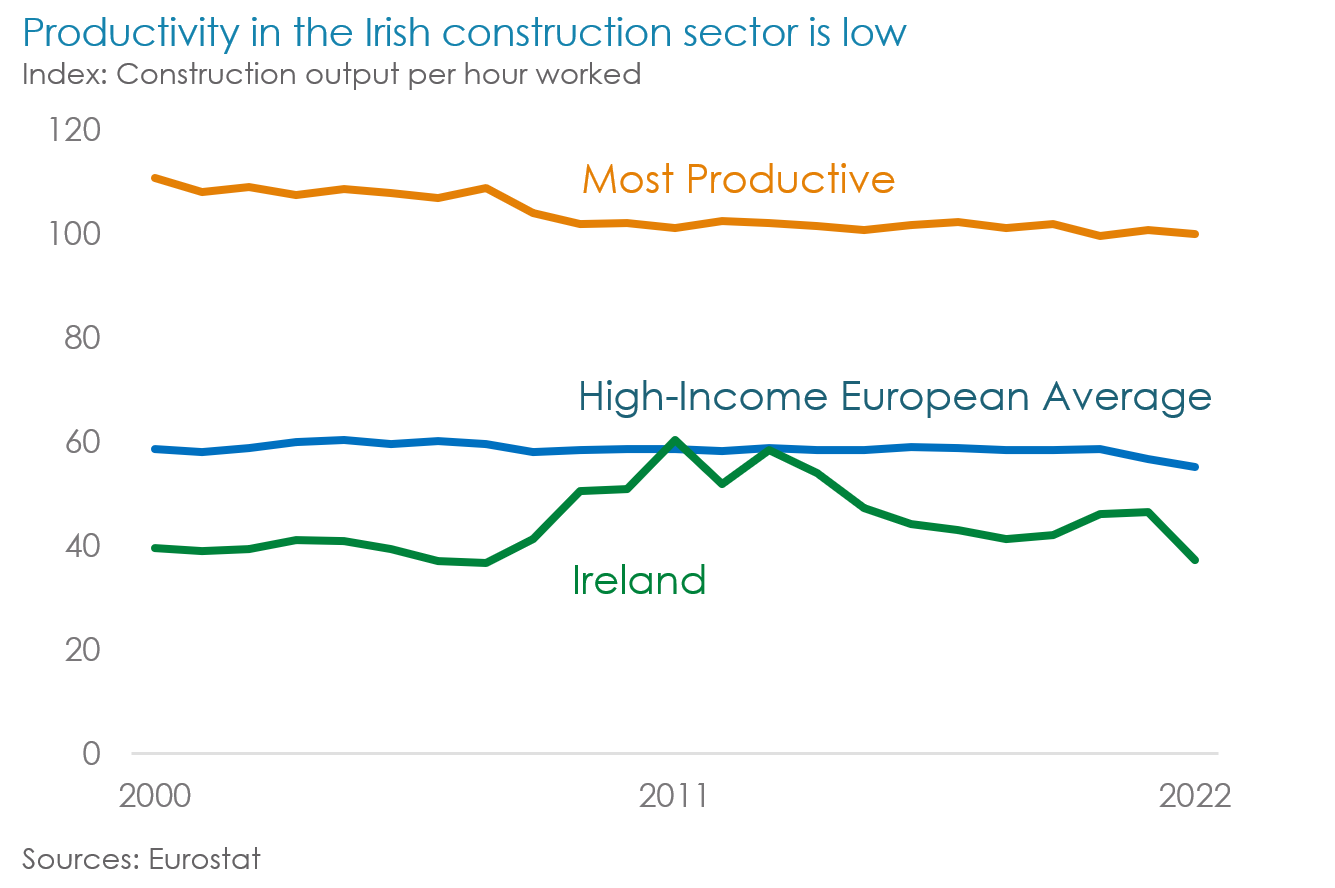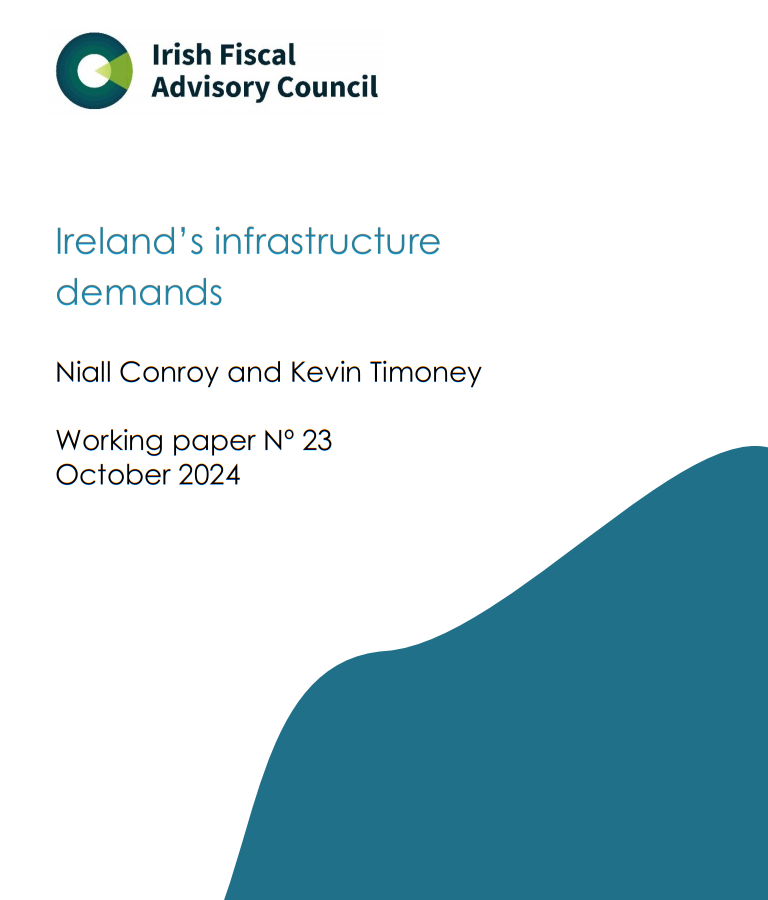Ireland’s Infrastructure Demands
Niall Conroy and Kevin Timoney
October 2024
Fiscal Council Working Paper Nº23
Summary
Where does Ireland’s infrastructure stand? Are there clear deficits and, if so, where? How can they be addressed? This paper attempts to address these questions.
We compare Ireland’s infrastructure to other high-income European countries. We find that, looking at economy-wide measures, a common story emerges. Ireland’s capital stock — a measure of its overall infrastructure — was well below average in the mid-1990s. While some progress has been made since then, Ireland’s infrastructure is now 25% lower than average for a high-income European country.

There are obvious areas where Ireland’s infrastructure is underdeveloped. The research identifies four key areas: housing, health, transport, and electricity.
Capacity constraints will make it difficult to address these deficits quickly. Many of these projects will require additional construction workers. Overall, we estimate that almost 80,000 additional construction workers would be required to address Ireland’s infrastructure deficits (this equates to a 47% increase from current levels). Given construction workers are already scarce in Ireland, this is a significant barrier to resolving infrastructure shortfalls. If productivity improved in the construction sector, less than 20,000 extra workers would be required. Productivity in the construction sector in Ireland is about 30% lower than in other European countries.

The planning and regulatory environment is a barrier to investment. At present, it means it takes longer and is more expensive to deliver housing and other major projects. Reforming the planning and objection system could aid the delivery of housing and other infrastructure. This would not cost a significant amount of money, relative to overall government spending. Time will tell if the new Planning and Development Act will bear fruit.
Some additional public investment may be required to address these infrastructure deficits. We find that the additional public investment required is modest relative to present levels of spending. However, before increasing spending, reallocating some existing spending could improve outcomes. The efficiency of investment could also be improved.
Data pack
This pack includes some of the key charts and data in the report.

